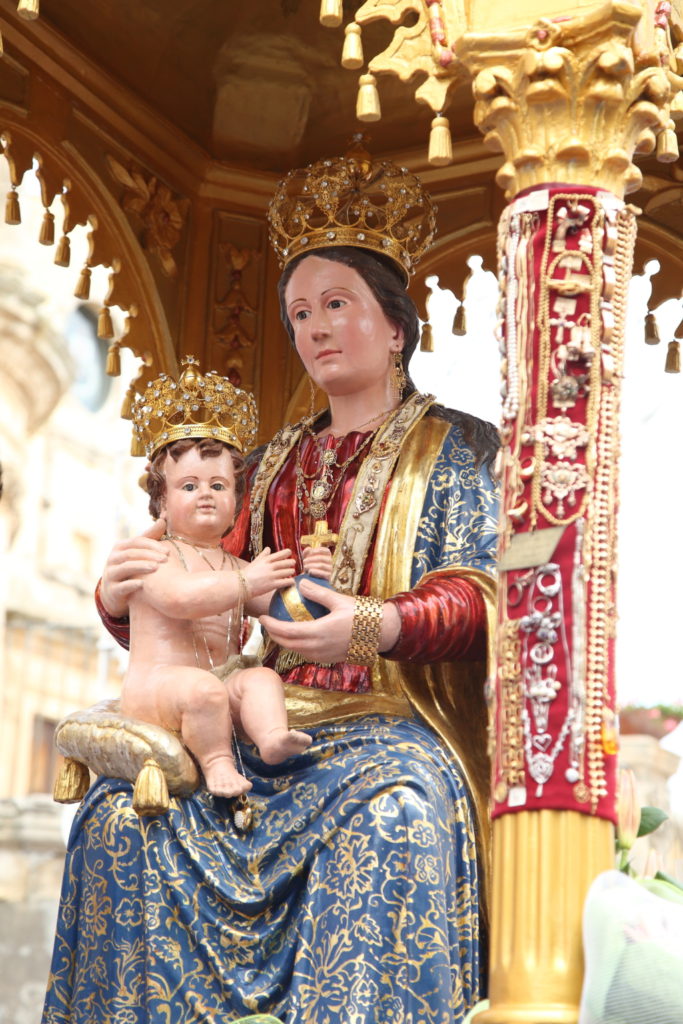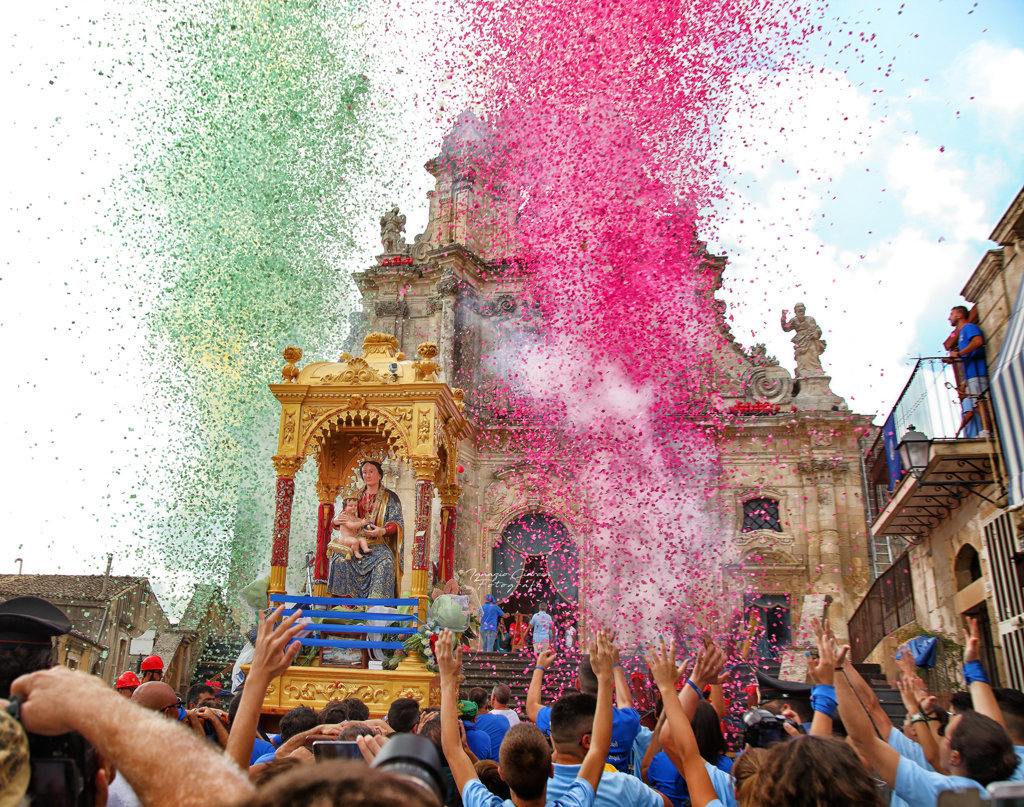Celebration of Our Lady of the Forest of Buscemi
The celebration of the Madonna marked the end of one cycle and the beginning of another: the start of the new agricultural year. This deeply cherished celebration takes place on the last Sunday of August, while on September 1st, the farming season officially begins.
Like all celebrations, it undergoes transformations shaped by popular imagination and the enduring strength of tradition—bringing with it new and distinct expressions, but also the disappearance of long-established rituals.
The sciuta (the exit) of the sacred image takes place around 9:00 in the morning from the sanctuary of the Madonna, where a 16th-century fresco is preserved—a fragment of a painted wall from the original church. Here, the real and symbolic elements of the festival converge: the forest, the water, the hermits.
Among the newer expressions of the celebration is what is now commonly called a Trasuta, the return of the sacred image to the Mother Church after its long procession through the town, starting from the remote church in the woods. The entrance into the church (a trasuta) is marked by a kind of dance performed by the bearers, evoking the saintly “ballads” seen in many Sicilian towns.
The return into the church is accompanied by the firing of nzareddi (confetti streamers) and paper flyers, amid the deafening noise of fireworks that grows louder each year—but this is the celebration, the tradition, the living expression of a devout people.
Our Lady of the Woods was proclaimed patroness of the town in 1919. Before that, the patroness was Our Lady Odigitria, as in nearby Palazzolo. Her statue was—and still is—kept in the Church of St. Sebastian.
This element has been included in the Register of Intangible Heritage of local interest of the Municipality of Buscemi, as part of Intervention 2 “Activation of the Observatory on the Intangible Cultural Heritage of the Territory through the application of the REIL methodology – Register of Intangible Heritage of Local Interest”, within the”Buscemi Borgo Immateriale” project, funded by the NRRP (National Recovery and Resilience Plan), Mission: Digitalisation, innovation, competitiveness, culture and tourism, Component: Tourism and culture 4.0, Investment 2.1 “Attractiveness of villages.” CUP: I84H22000050006.




